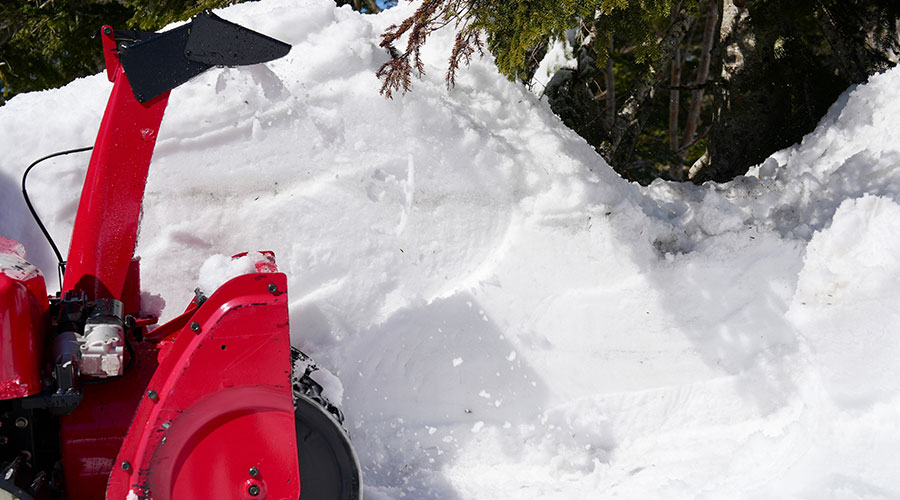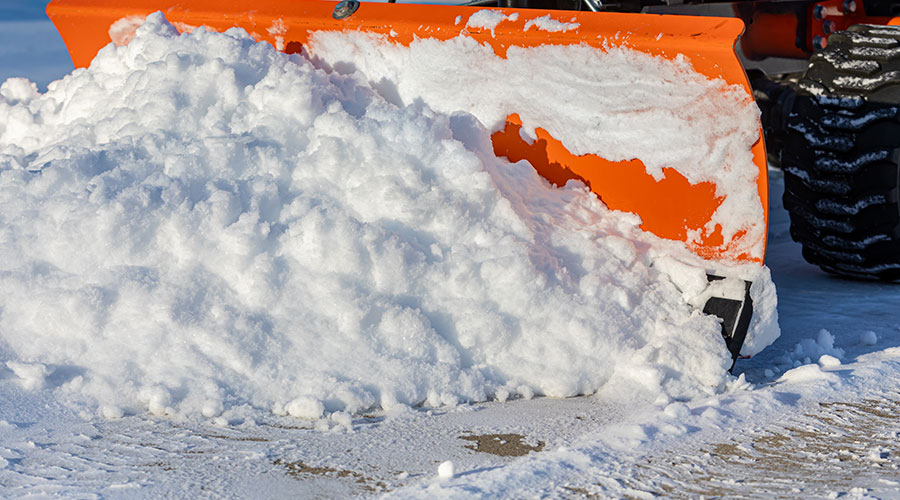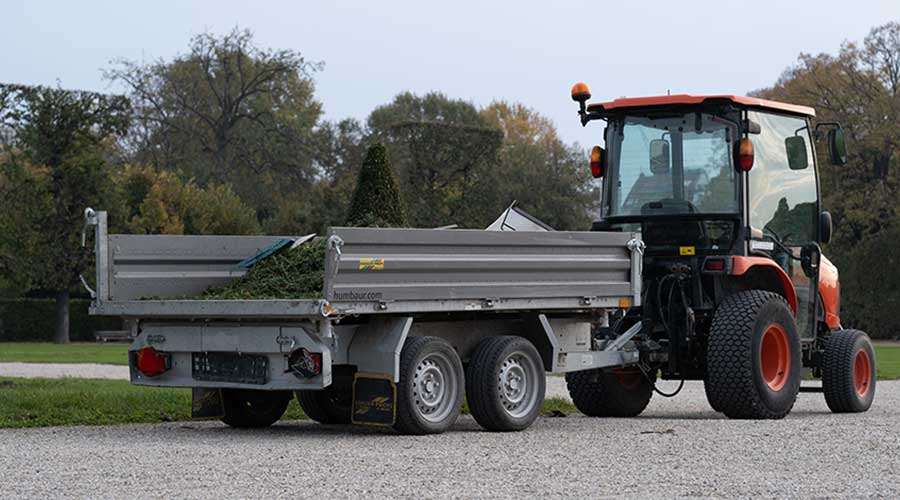Clearing a Path To Snow and Ice Removal
Planning and preparation are the cornerstones of successful snow-removal efforts
In August, when it’s 95 degrees in the shade, it’s hard to think about snow and ice removal. But now is the time to start planning for the upcoming winter season. Planning is critical, and it takes time to develop a detailed specification and snow response plan.
“A written snow and ice response plan is a must,” says John Allin, president of Snow Management Group, a subsidiary of the Allin Companies in Erie, Pa., and president of the Snow & Ice Management Association Inc.
“It does not matter how large or small your facility or how much snow and ice is typical for your area, a snow response plan it is essential for safe, efficient, cost-effective snow and ice management,” he says.
Snow and ice storms unpredictable and can result in operational chaos. They can also be very hazardous and a source of serious accidents and lawsuits. To protect organizations from litigation, managers should create a written, strategic, well-thought-out and executed plan. In short, it is the responsibility of grounds care managers to make sure all the bases are covered regarding snow and ice removal operations and liability.
Setting Up a Plan
Setting up a strategic plan is a cooperative effort that might involve the organization’s top management, as well as managers from key departments. It will be important to get their input on the level of service expected and to prioritize those areas of the facility that will require significant attention during the snow removal process.
Allin recommends that managers examine a site map and plot the various facility areas and their required levels of service. For example, a main entrance might need to be kept free of snow and ice at all times and be the top priority in the sequence of operations, while secondary walks might be allowed to have some snow cover and might be cleared at the end of the snow removal schedule.
On the site map, mark out the specific areas so that all crew members know exactly where work is to be done and are less likely to overlook key areas.
The site map or set of maps will be an invaluable communication tool for scheduling and dispatching crews and follow-up operations. If no current site map is available, now is the time to locate or create one.
Once managers understand the scope of the site and service expectations, a written response plan must be created.
The written plan “must be extremely thorough to avoid snowstorm chaos and/or lawsuits stemming from accidents due to snow and ice accumulations,” Allin says. Detail every step of the process — who, what, where, when and how. The plan should include but not be limited to information such as instructions on:
- how to use all equipment and tools
- how much snow is allowed on the pavement following removal
- the sequence in which areas should be serviced
- how much snowfall is needed to begin snow removal operations
- who is to be notified
- who determines when crews are called out
- how much salt or deicer to apply
- when to apply deicing products
- how to correctly document each occasion of snow removal services.
Developing a detailed plan will take some time and might require the collaboration of several staff members. Hiring an experienced consultant to help develop the plan might save time and money.
Once the plan is documented, it must be communicated to staff. In most parts of the country, snowstorms are infrequent, and there is no time to practice procedures or memorize routines. And every storm is a little different. That’s why a written plan that everyone can refer to and follow is important for efficient service.
The Finer Points
Snow hauling is one of the biggest inefficiencies in snow-removal operations.
“There are actually very few sites that do not have adequate room for snow storage,” Allin says. “Look around the site thoroughly; there is usually grass or a portion of the parking lot that can be used. Hauling snow off property is very time consuming and, therefore, costly. Also, be aware that this is one way some contractors try to increase revenue.” Locate areas for snow storage on the site map.
“Presalting pavement before a storm can save a considerable amount of snow removal time,” Allin says. “By applying salt just before the snow falls the snow will not bond to the pavement. Removal is easier and up to 30 percent less product is used.”
Proper documentation following a snow response call is often overlooked.
“Details of the snow removal process should be logged after each occasion,” Allin says. Again, managers should note who, what, where and when, as well as weather conditions and products and quantities. This information will be valuable when planning future snow response plans and in the event of an accident or insurance claim.
Plan the Work, Work the Plan
“Dealing with Mother Nature is the biggest challenge,” Allin says. “A storm can hit anytime with any intensity. They don’t wait to strike after work hours, between classes, while the mall is closed or after your operators have had a good night’s sleep. And you never know if there will be a light dusting of snow or a 3-foot accumulation during a three-day snowstorm.
“Having a plan, working the plan, and constant communication with your staff, outside contractor and other key managers within your organization is the only way to meet the challenge with success.”
One thing is certain: the weather will be uncertain. Managers have a responsibility to prepare an organization and a facility’s grounds for any type of weather. One way to limit the uncertainties and liabilities of winter weather is to have a strategic plan of action and stay informed about the latest technologies available in the snow and ice management industry.
Although snow and ice management might seem like a small portion of responsibility for grounds managers, there are few other duties that are as important.
A few too many weeds or an overgrown lawn have never caused serious accidents or death. But negligence during snow and ice removal operations can easily result in tragedy. In short, snow and ice management can be a life or death matter.
Staffing and Equipment Insights
“Experience is the only way to know production capabilities of various pieces of equipment and staff,” says John Allin, president of Snow Management Group and of the Snow & Ice Management Association Inc. “There are no production formulas available for snow and ice management like there are for mowing and edging.” As a result, there will be much trial and error.
Because snow and ice management is usually an infrequent but very important responsibility for grounds care managers, Allin recommends that managers consider outsourcing some of the work.
“The cost of efficient equipment is a huge capital expense that can rarely be justified for an in-house operation.,” he says. “Purchasing a $200,000 loader and containment plow that will be used a few months a year is not cost-effective.
“Partnering with a outside contractor that uses the latest equipment can save critical time and money. A contractor could provide plowing services that require specialized equipment while the in-house staff completes the hand work. Usually, an outside contractor specializing in snow and ice management can provide services for less money and in less time than an in-house crew with other responsibilities within the organization.”
“All facility managers must avail themselves to the latest technologies and information regarding advancements in snow and ice management,” Allin says. “New advancements in equipment, products and techniques can save considerable time and money.”
One bucket loader with a new containment plow can do the job of five plow trucks. Containment plows come in a variety of sizes and will fit onto bucket loader tractors, skid-steer loaders, backhoes, or compact utility tractors.
Managers also will need to research deicing products and use them appropriately. Don’t rely on one product. They are formulated to work under different conditions. Don’t rely on the dealer to sell you the best product for the current situation. Many times, the best product for the current weather conditions will be the product that is overstocked.
“Educate yourself,” Allin says. “Ask for the specific products that you know are right for the current conditions.”
|
Related Topics:











